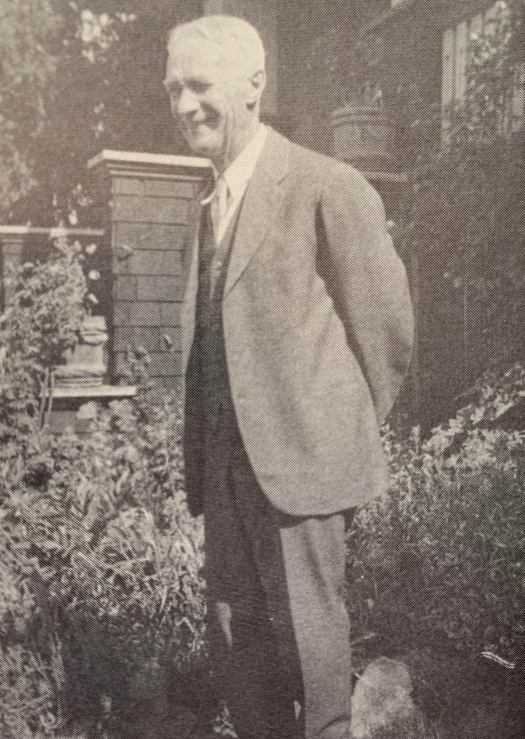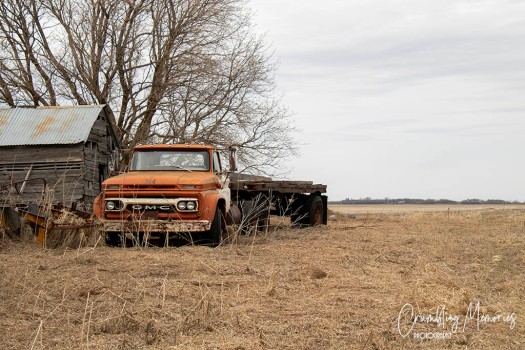James and his family originally immigrated to Canada to Cornwall, Ontario. The 2nd of 12 children, James came to Manitoba followed by his two brothers and two sisters. His sister married and from my understanding lived on this land with her husband. I do not know if it was them that built this house, or her great-nephew, Donald when he acquired the land upon his marriage. I can tell you that this family had five generations live and farm this land. It has been in their name since 1893 and in the family, by relative, since 1883.

The land, a well-wooded section of land was broken by steam engine and bush plow. Throughout the property, trails were made for travel, via wagon. In one of the wooded areas, on the way to the house, I did see what was left of an old wagon.

There is a barn on this particular section. I do know that the family built a barn that had a windmill built in the center, which supplied power to pump water. Outside the barn, at any given time, had hundreds of bags of grain from neighbors, waiting to be ground. Unfortunately, it was the same windmill that cause a fire in 1917. A second barn was rebuilt in the same location. From what I see, it makes perfect sense that the barn still standing there today, could be from the early 1900’s.

James wife died in 1895. With his young family in tow, he returned to Ontario. He was homesick for Manitoba and returned with his mother who helped him care for her grandchildren. In 1924 he drove his Model T to Victoria, BC and married his deceased brother’s wife. His son took over the farm.
James son, Angus (also known as Angie) married Alice on November 30, 1914 and purchased this piece of land, which was at one time was owned by Alice’s uncle.

Together Angie & Alice had 3 children.

They lived on the farm for 30 years and upon their move their only son, Donald, born in 1916, on this farm, took over the farm from Angie and Alice.

Donald’s son who was born in 1949, built a new house in 1974. At the time Grandpa Angie was 86 years old and helped work on it with his Grandson. The newer house and the original house shown above, remains standing on the property.

The trails and shaded areas where the family once had family picnics remain. Somewhere on this section of land there were even tennis courts.

The current owners of this property live in a third house on the property and run their own farming operation here. They have goats, sheep and cattle. It was hard for me to take photos as I did not want to invade their space. I am thankful for them allowing me to photograph parts of their farm that is their home.



































